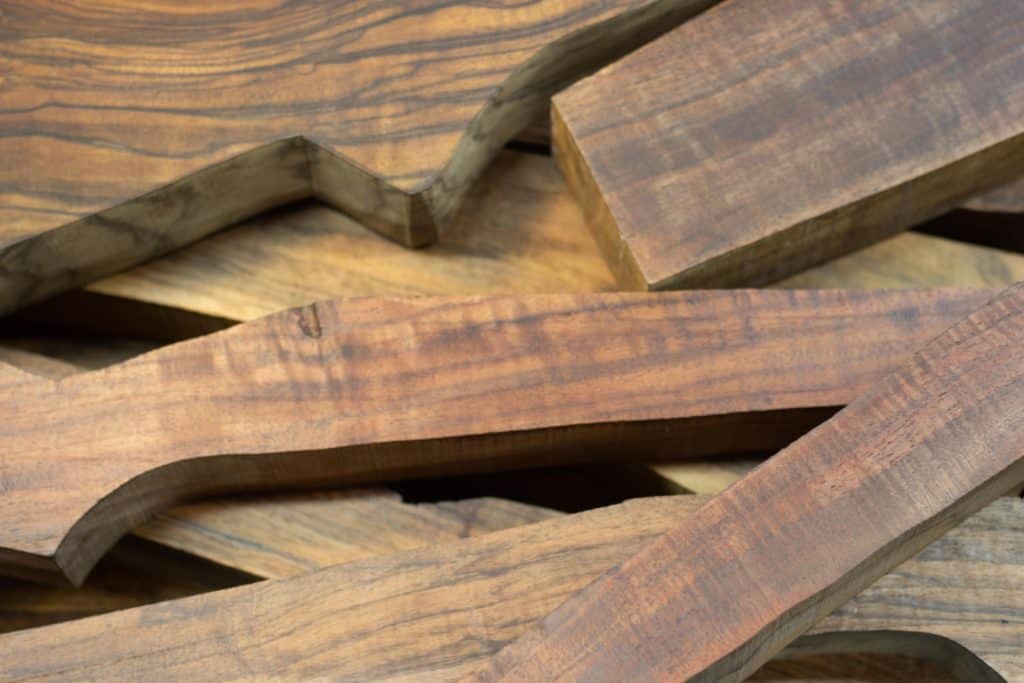
If you’ve spent any amount of time looking at stock blanks, you will know that there is no such thing as “just walnut.” French, English, Black, Bastogne, Turkish, Italian, and Claro are all names you will see pop up. So what’s the difference? What is Claro Walnut? Is there a difference between Turkish and Circassian?
Four species of walnut are used regularly for gunstocks; Black, English, Claro, and Bastogne. All of the other names you hear fall under one of those four species.
Wood has been used to stock firearms since the beginning. Hardwoods have prevailed over softwoods, lasting centuries when taken care of properly. Countless types of wood have been utilized over the years, but walnut has come out on top time and time again.
Affiliate Disclosure: This article may contain affiliate links. When you use these links, I earn a small commission from each sale generated at no cost to you. This commission helps me continue to put out free content. I work a full-time job that I am very happy with; therefore, I don’t need this commission and am not obligated to speak highly of any product. Everything written is my own opinion: the good, the bad, and the ugly.
Wood Differences
Wood is composed of many fibers of cellulose. These fibers define the type of wood and its characteristics. Their alignment, density, and color all play into how tightly they are packed together. All of these elements are affected by the soil in the region, the growing season, and the amount of annual moisture.
Choosing the Best Gunstock Blank for the Job
A good rule of thumb is that the harder a tree has to grow, the better wood it develops. This is greatly affected by less fertile soil, colder climates, and rocky soil. This is not to say that a tree grown in all three is ideal, but one with one or two features tends to produce a better product for gunstocks.
Scientific Comparison

Categorizing these different types of wood using their scientific names is easiest. Black walnut is all by itself under the name Juglans Nigra. Claro carries the name Juglans hindsii. Bastogne is Juglans x paradox. It gets a little more complicated when you get into English Walnut. Classified as Juglans regia, English is a thin-shelled walnut covering French, Spanish, Italian, Australian, and Circassian or Turkish walnuts. You can see the similarities when looking at the weight in the charts below.
Black Walnut
Scientific Name: Juglans nigra

Found in North America, Black Walnut is the most popular wood for a gunstock on the continent. It has been used for centuries to stock everything from military rifles to flintlocks. The coloring is less rich than its European cousins, often without the heavy contrast in grains that you see in other types. When an oil finish is applied, a beautiful deep-brown color is revealed.
Black walnut is solid when the grain is running in the right direction and is one of my favorite woods to work with. It is relatively coarse-grained, strong, and light in weight compared to some other stock woods. Due to its grain structure, I rarely go higher than 20 Lines per inch(LPI) when checkering. It is one of the more affordable stock blanks and is perfect for a bolt-action hunting rifle.
English Walnut
Scientific Name: Juglans regia
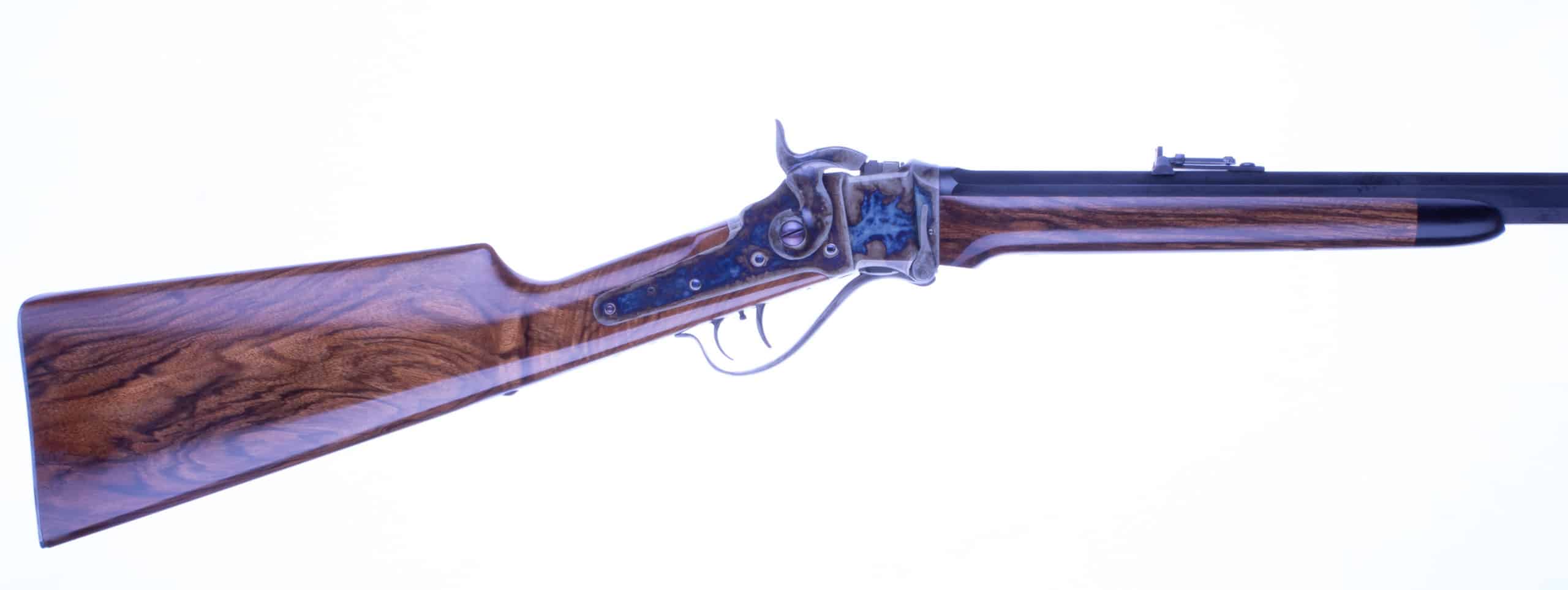
A highly regarded wood, English is native to the northern hemispheres. It has traditionally been used on the finest European rifles and shotguns and is held in high regard in the United States. The coloring varies wildly from very light colors to extremely dark, largely dependent on the region and soil it grew in. It is known for its high contrast in coloring in the grain and beautiful marbling and mineral streaks.

English walnut is also known for its strength and workability. It can handle the heaviest of recoiling rifles and is excellent to work with if your chisels are sharp. It can be a very dense wood, sometimes leaving you with very little grain to fill when finishing. English will usually take a lot of the finer checkering patterns and hold the diamonds well. I think it is hard to beat a finely figured piece of English Walnut. If I could have every gun in my safe stocked with it, I would.
Australian Walnut is English walnut grown “Down Under.” While I have no experience working with Australian, Evan Koch of Minnesota claims that his piece was noticeably tougher than other types of wood he’s worked with. The coloring speaks for itself in the below picture of the Remington 40x Evan stocked using it.
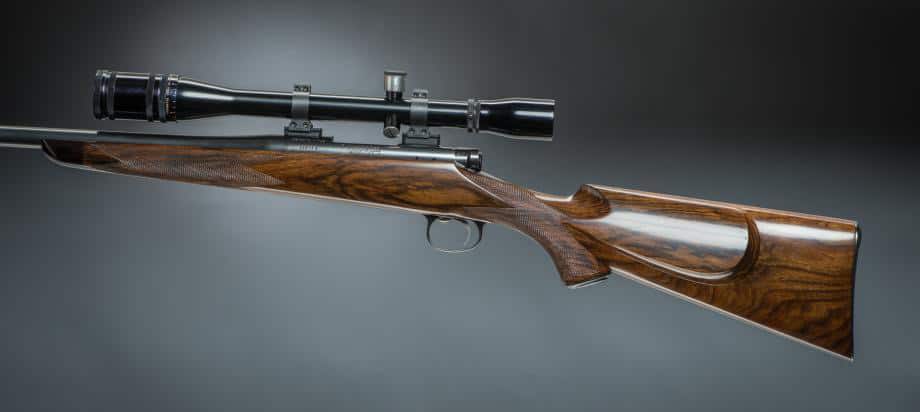
French Walnut

Another prevalent wood for stockmakers is French walnut. This wood can sometimes be confused with English as the qualities are very similar. It is the same type of wood scientifically but identified differently because the soil in the region it comes from brings out different qualities. French will sometimes have an orangish tint unfinished and will finish lighter than English. The rifle below was finished with a straight oil finish without using stains or coloring agents.

Like English, French is a solid wood choice for gunstocks and is suitable for large-caliber rifles. Although not all French is grown in France, Cali’Co Hardwoods sells nice French walnut blanks that have been growing in California for 200 years now. With the tight grain structure, finer checkering can be achieved. I struggle to pass up on a nice piece of French Walnut.
Spanish Walnut is nearly indistinguishable from French, and many of the characteristics are the same.
Circassian or Turkish Walnut
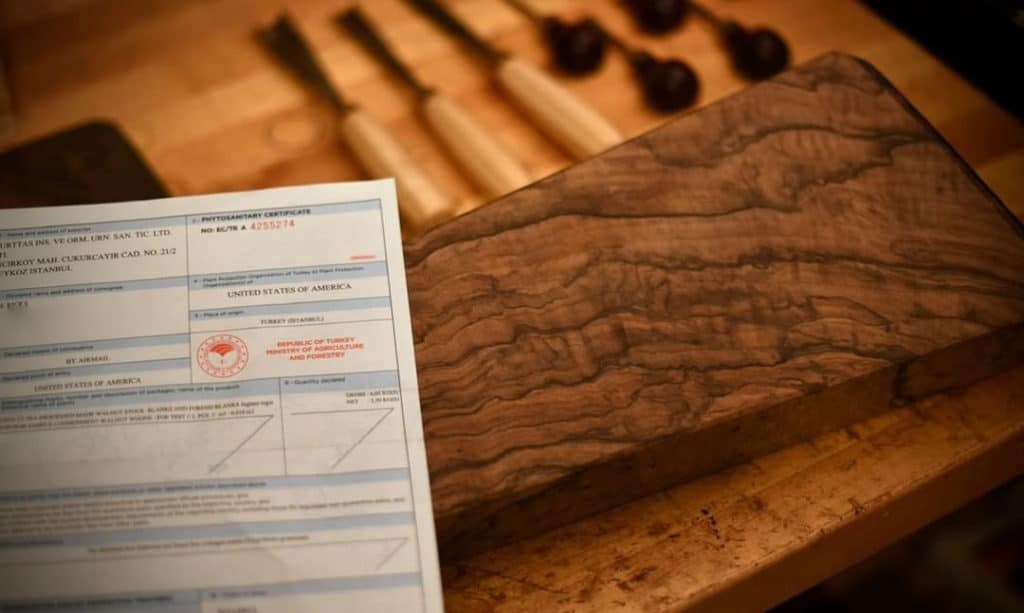
Circassian and Turkish walnut are the same and are stunning when used on a rifle or shotgun. It is very similar to French and English in its characteristics but tends to have more marbling and figure. Once again, it is scientifically the same as English or Julias Regia. It tends to have a lighter background color with heavy contrast in the black and dark grey streaks. The higher the grade of wood you go with, the harder it will be to get an excellent straight-flowing grain through the wrist of the stock, just something to keep in mind when shopping for a good piece of Turkish walnut.
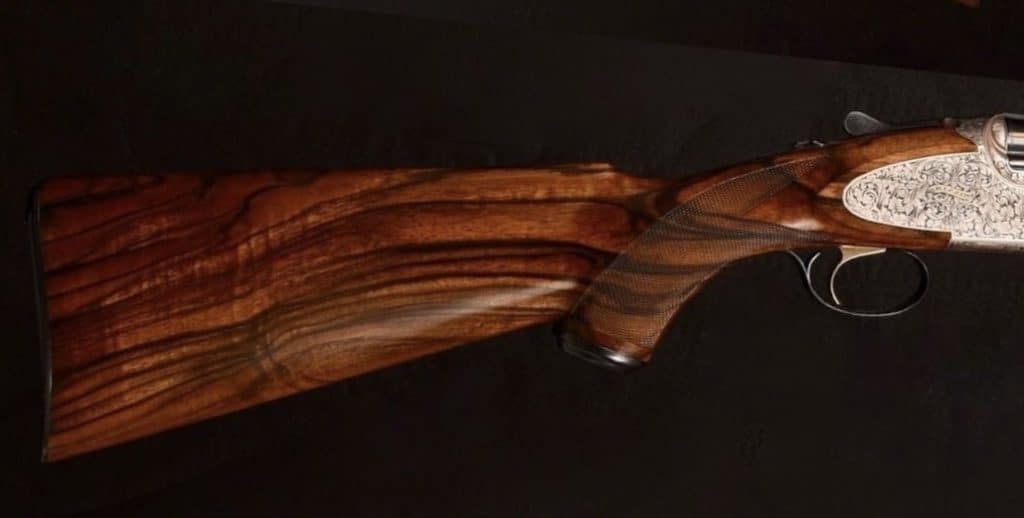
This type of walnut is tough, durable, and very workable, making it even better. Turkish walnut checkers very similar to French walnut, being able to achieve fine patterns with higher lines per inch than black walnut. So what’s the downside to Turkish walnut? It’s expensive as hell! For a good reason, though.
Italian walnut is very similar to Turkish, and much of the information here can be applied to it.
California or Claro Walnut
Scientific Name: Juglans hindsii

Claro Walnut is one of the most beautiful types of wood used for gunstocks. The colors are unmatched, in my opinion, with many yellows, reds, oranges, and browns with black streaking. On top of that, this wood is often found with highly figured feather crotch.
The origins of Claro walnut seem to be relatively unknown; the wood database treats it as its own native species. In Monty Kennedy’s book Checkering and Carving of Gunstocks, he states that Claro is a cross between English and Black Walnut. I have always heard this, but this is the only place I can find it in writing. Cali’co hardwood makes a good argument for it being its own species that originated somewhere in either Turkey or Greece. Either way, almost all of the Claro walnut found today comes from the west coast of the United States.
“Claro is the crazy hot girlfriend, irresistible to look at and hold, but potentially dangerous to commit to.” -Evan Koch, Stockmaker in Minnesota.
There is a downside to Claro.
It can be a complete pain to work with. I have stocked close to 70 rifles using Claro Walnut and seldom enjoy it. It chips out easily during inletting and is easy to turn “wavy” when using a scraper. This waviness is caused by hard and soft spots in the grain, causing the scraper to dig deeper in on every other grain. This can be alleviated by angling your scraper and taking off as little as possible. Care needs to be taken around the edges of the inletting as they are easily damaged or chipped off.

It is relatively painless to shape; however, be conservative using your rasps during this process. The teeth on the rasp seem to dig into Claro deeper than other woods. Filling the wood pores during the finishing process can be painful as the grain is very open. Lastly, checkering can be downright miserable. Kennedy claims it is because the tree is irrigated and grown too fast, making it soft.
With all of that being said, that is the price you pay for having arguably the most beautiful wood out there. Due to its relative softness, I wouldn’t use it for heavy recoiling rifles without cross bolts. However, it is not all doom and gloom, especially for the end-user. It is painful for the stockmaker not to affect the customer’s decision!
Bastogne Walnut
Scientific Name: Juglans x paradox
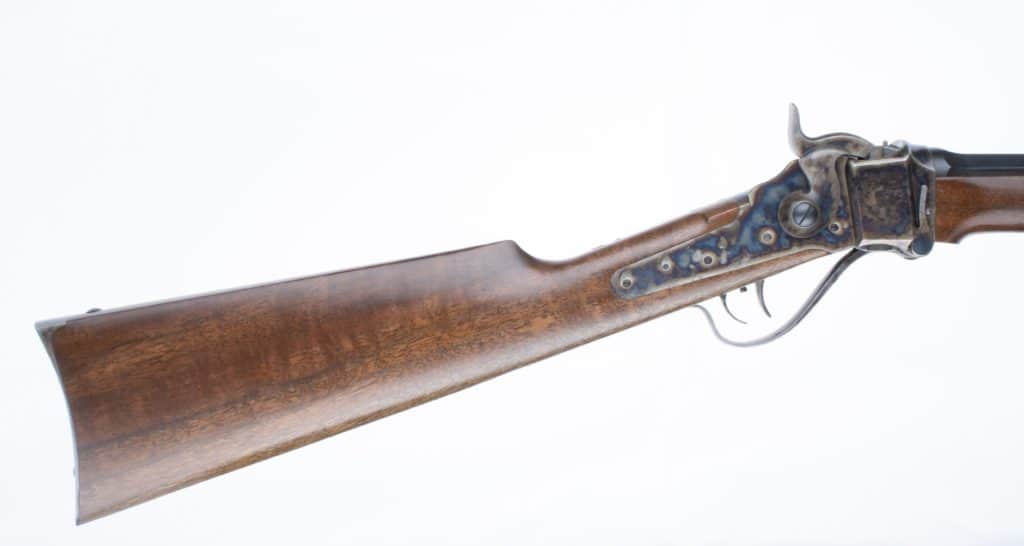
Bastogne Walnut is a cross between Claro and English walnut and has the benefits of both. It is a very dense and hard piece of wood. It has a golden yellow and brown color unfinished and is unique in that its sapwood is nearly indistinguishable from the heartwood. The sapwood has a slightly grey color that is easily matched to the rest of the stock. The grain tends to be very straight and works similarly to black walnut.
The origins of Bastogne walnut are fascinating in that it is a relatively new type of tree that was developed during an experiment in the 1890s with cross-pollination. The trees grew faster than their parent species and were harder and better suited for lumber. According to the wood database, the name “Bastogne” is purely a marketing term.
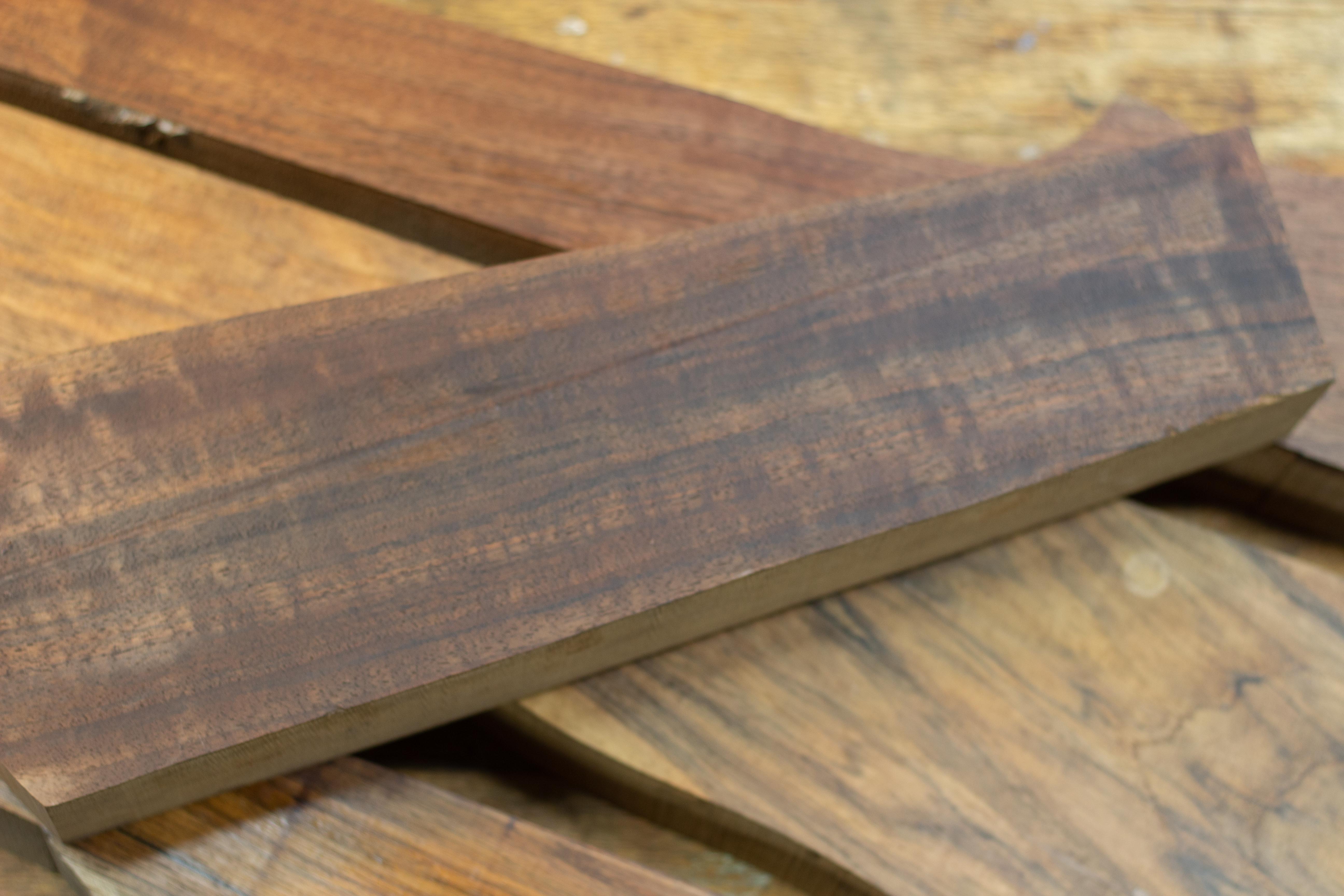
Due to its strength, Bastogne Walnut is suitable for the largest calibers out there. It is great to work with and checkers well. The biggest downside to this type of wood is its weight. It is heavy. Plain and simple. Not the ideal choice for a lightweight mountain rifle build.
Use coupon code KTG10 to get 10% off your order of $150 or more at Brownells.
Consider the Weight
All of the woods listed above can be classified as a walnut. However, they have so many different characteristics they should be looked at individually. For example, one of the characteristics that are often scrutinized is weight. Maybe you are building a lightweight sheep rifle that you count ounces on—or working on a shoulder bruiser headed for Africa that might benefit from a heavier, more robust piece of wood.
| Wood Type | Average Dried Weight |
| Black Walnut | 38 lbs sq/ft |
| English Walnut | 40 lbs sq/ft |
| French Walnut | 40 lbs sq/ft |
| Bastogne Walnut | 46 lbs sq/ft |
| Turkish Walnut | 40 lbs sq/ft |
| Claro Walnut | 40 lbs sq/ft |
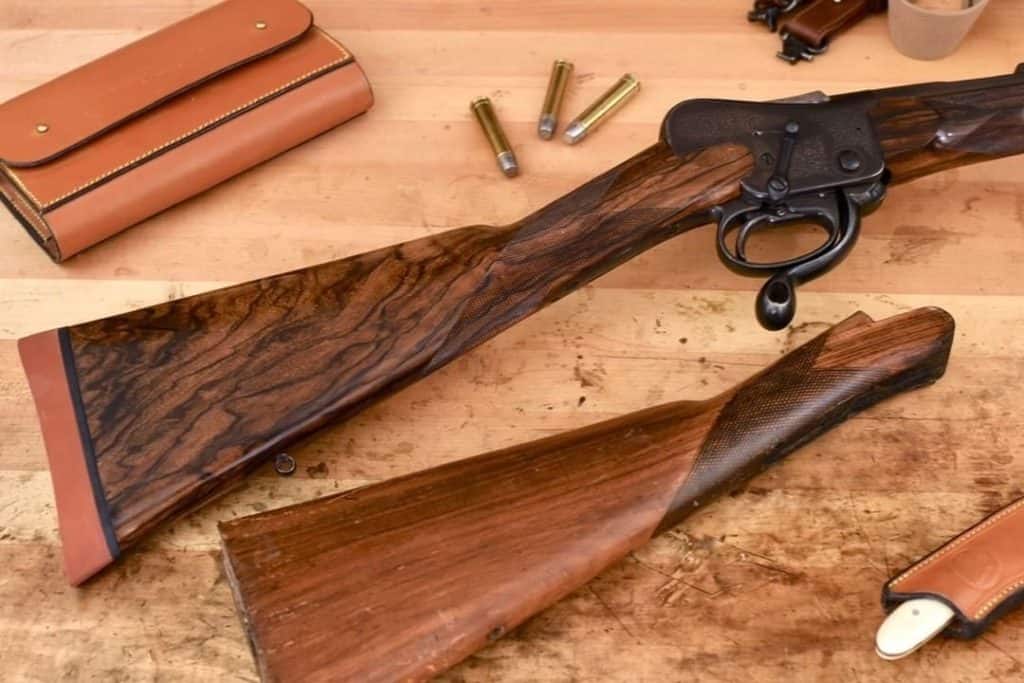
Choosing the Right Walnut blank
Armed with all of the above knowledge, this should help you decide on what type of wood you would like to use for a build. Regardless of everything that has been said, grain flow is everything. The most beautiful piece of walnut is worth nothing if the grain goes in the wrong direction. All of the listed woods work well for gunstocks if adequately handled.
If you’ve made it this far, you may enjoy my article on Choosing the Right Stock Blank. In that article, I cover size, layout, sapwood, slab-sawn vs. quarter sawn, grading a gunstock, and drying it properly.
Please don’t get caught up on all of the different types of walnut; find one that is appealing to you, has the proper grain flow, and go with it!

Written by: Kurt Martonik
Kurt is a Gunsmith, Reloader, Hunter, and Outdoorsman. He grew up in Elk County, Pennsylvania, where he became obsessed with the world of firearms. Following high school, Kurt enlisted in the United States Air Force as a Boom Operator, where he eventually rose to the position of Instructor. After his military service, he attended the Colorado School of Trades(CST) in Lakewood, CO for gunsmithing. Following graduation, he accepted a job at C. Sharps Arms in Montana, where he worked as a full time stockmaker and gunsmith.
Hello, I have an upcoming stock project. I am looking for a company that inlets stock blanks. I have done some in the past, but my Dad who was a stockmaker always handled that. I believe he may have referred to it as semi inletting. The blanks would come back roughly machined and still had to be completely fitted to the action. Do you have a go-to company that you could recommend ?
Thank you – Curt
I, unfortunately, don’t have a company that I use frequently. Most reputable gunsmiths should be able to inlet the blank for you.
Very informative article. I have a large bore dangerous game rifle in stocked in an Exhibition grade English, a father/son pair of break-action rifles in a 4X Exhibition grade Turkish, and have a family heirloom 45-70 headed to be stocked in Exhibition Turkish. I never knew the ins/outs of the blanks I’ve purchased. I just always relied on the seller to steer me in the right direction for a given project. So far…so good.
Thanks Jeffery! It looks like you have selected your wood very well so far! If you’re using Evan for all of these builds you are in good hands, he knows his wood!
Really nice article and a lot of good information on the wood. I just placed an order for an
1874 Hartford 45-70 from C Sharps.. Hoping for a nice piece of wood and who knows you may be the guy working it. I know a lot of the black walnut comes out of Missouri. Really enjoy reading your articles.
Mark,
Glad to hear that! There’s a 50/50 chance I’ll end up stocking it. I’ve been digging deep into the wood that goes into stockmaking so stay tuned, lots more to come!
Hi Kurt! I’m marks brother and I also have a C Sharps 1874 coming that I ordered back in October so it should be coming up soon. I hope you get to do mine. I ordered semi-fancy wood so hoping it has some good grain. Who knows maybe you will get to work on my order. Keep the articles coming, Mark and I are reading everyone of them.
Thanks for reading Gary! The 1874 Sharps is a lot of fun to go out and shoot, and even better to build.
Really enjoyed the article on the different walnut for gun stocks. Have an 1874 in 50/70 from C Sharps ordered now. Hard to beat the beauty of black walnut on a Sharps or any firearm. Thanks for a good read.
Amazing article! I have three air rifles (here in the UK) with bespoke hand made walnut stocks. Two are american black and one is Turkish – they all look stunning and are made in the Tyrolean style and used in the field . A lot of people in my hunting community argue over how to care for walnut. I’ve always followed the advice of using a commercial product revolving around boiled linseed oil and here we have CCL oil and TS-95 as variants (with different dryers in them etc) and to build the finish up over several applications. I was wondering your thoughts on a good oil for a nice traditional oiled finish? Would you agree with this, have other suggestions? Is there anything you’d recommend to stay away from for walnut in terms of oiled finishes?
Jason, traditionally boiled linseed oil has been great. While it still does the job, there are many better options out there. I’m currently using a combination of a sealer and teak oil. If you can find an oil-based finish used for boat applications, they do great for keeping moisture out. Sounds like some great air rifles you have there!
Thanks Kurt – Keep up the good work!!!! I’ll stick with BLO as I like the results and it seals really well where I can see the rain sitting on top of the stock and not penetrating. A wipe down and around two applications of BLO a year seems to so a great job (at least so far!!!). Yes, I have some lovely air rifles and I’m lucky. Over here in the UK getting blanks large enough for air rifle stocks is becoming harder to source (much bigger than shotgun blanks of course). I hope you’re not struggling as much as some stock makers over here are suggesting!
Kind regards
Jason